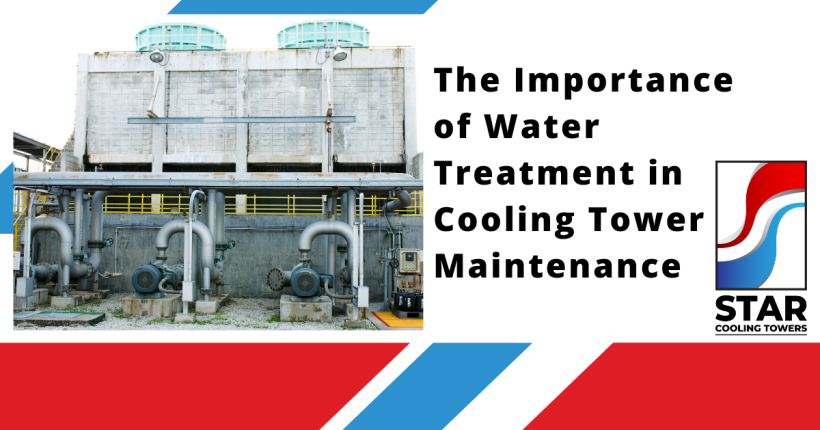In the realm of commercial and industrial services, where efficiency and reliability are paramount, cooling towers play a vital role in maintaining optimal working conditions for various processes. Among the myriad factors influencing the performance of these cooling towers, water treatment stands out as a cornerstone for ensuring longevity, efficiency, and environmental responsibility. In this blog post, we will explore the critical role of water treatment in the maintenance of cooling towers, with a specific focus on the expertise provided by Star Cooling Towers.
Understanding Cooling Towers:
Cooling towers are integral components of industrial processes, helping dissipate excess heat and maintain the desired temperature within facilities. They are widely employed in sectors such as power generation, manufacturing, and HVAC systems. The basic principle involves the exchange of heat between hot water and air, leading to the release of heat into the atmosphere and the circulation of cooled water back into the system.
The Challenge of Water Contamination:
Water is the lifeblood of cooling towers, and its quality has a direct impact on the efficiency and lifespan of these systems. Unfortunately, water sources are often fraught with impurities, such as minerals, algae, bacteria, and suspended solids. When left untreated, these contaminants can accumulate within the cooling tower, causing corrosion, scaling, fouling, and the growth of harmful microorganisms.
The Role of Water Treatment:
This is where the expertise of Star Cooling Towers comes into play. As specialists in all phases of cooling tower technologies, they understand the significance of water treatment in mitigating the adverse effects of contamination. Water treatment involves a range of processes aimed at purifying and maintaining the quality of water within the cooling system.
- Scale and Corrosion Inhibition: Star Cooling Towers employs advanced chemical treatments to inhibit the formation of scale and corrosion within the cooling tower. Scaling can reduce heat transfer efficiency, while corrosion can compromise the structural integrity of the system. Proper treatment ensures the longevity and optimal performance of cooling towers.
- Microbial Control: The growth of harmful microorganisms, such as Legionella bacteria, can pose serious health risks and hinder the efficiency of cooling towers. Star Cooling Towers implements biocides and other microbial control measures to prevent the proliferation of these contaminants, safeguarding both the system and the surrounding environment.
- Filtration and Removal of Suspended Solids: Suspended solids can clog pipes, impede water flow, and contribute to fouling. Star Cooling Towers employs filtration systems to remove these particles, ensuring unobstructed water circulation and minimizing the risk of damage to the cooling tower components.
Conclusion:
In the dynamic landscape of industrial and commercial services, the maintenance of cooling towers is a mission-critical task. Star Cooling Towers, with its commitment to excellence and comprehensive expertise, stands out as a key player in the realm of cooling tower technologies. By emphasizing the importance of water treatment, Star Cooling Towers ensures that their clients’ cooling systems operate at peak efficiency, contributing to both operational success and environmental sustainability. In a world where precision and reliability are non-negotiable, the role of water treatment in cooling tower maintenance cannot be overstated.


